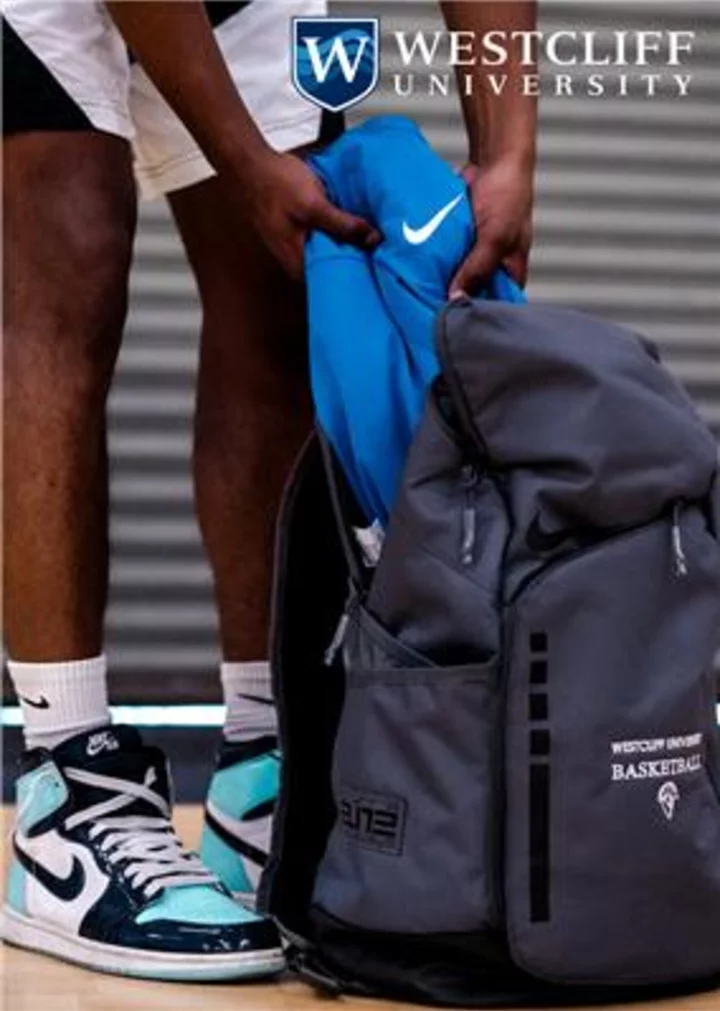Across the street from Columbia University Irving Medical Center, and around the corner from the 168th street MTA stop, is a big brick building. It has stood there for more than half a century. The chips in the walls show its age. Rusting metal bars cover the windows, while banners adorned with winged feet flutter above. Step inside and you'll hear the roar of a crowd echoing through marble hallways. You'll catch glimpses of high school students in classrooms, shoulders hunched over SAT prep textbooks. Go up one flight of stairs and you'll walk out into a massive indoor track surrounded by stands that can fit thousands with a Jumbotron rivaling that of any basketball arena hanging from above.
This is The Armory. Home to a historic track in track and field and a pillar of the Washington Heights neighborhood. It has been utilized many different ways since it was built in the early 1900s. Naturally it began as an armory, home to the Army Engineering Corps. Then it became a homeless shelter during the New York City homelessness crisis later in the 20th century and fell into disrepair. Finally, Dr. Norbert Sander, the only man from NYC to win the New York City Marathon, was at the forefront of its refurbishment in an effort to transform it into a renowned track and field institution.
He succeeded on that front, but since he passed in 2017, it has become so much more. The Armory still bustles with track meets from November through April. Olympic athletes have roamed the halls. Hundreds of records have been set in the building. But those who head The Armory Foundation hope to serve the community and the young athletes who walk through those doors.
Rita Finkel and Jonathan Schindel are the co-presidents of The Armory Foundation. Named to their positions seven years ago, they make decisions in tandem with their board of directors on the present and future of The Armory. Primarily, though, they spend their days fundraising. They have a partnership with Nike and many corporate sponsorships. They utilize the space they have to host events like Sumo and Sushi for earned income. The money they raise doesn't all go to upkeep of the legendary track, as you might guess. Instead, much of it will go to the other programs The Armory runs to help the under-resourced of all ages.
The primary example is The Armory's College Prep Program. It offers any student the opportunity to receive SAT prep, personalized college application assistance, and college visits to a degree that may be commonplace at well-funded public and private schools, but not so much for NYC public schools. It's not a test-in program. Anybody is welcome. And the way they arrive is often through track and field.
"If this was Madison Square Garden and we opened up MSG to any kid who wanted to come play basketball, it would be mobbed," Jonathan told The Big Lead. "And if MSG said, you know what, if you’re interested in sticking around after you’re done playing ball, we can help you academically and with college. That’s the model, even if they don’t do that.
"The kids want to be here to run, jump, and throw. They’re all not going to spend a gazillion extra hours on academics. But some subset of them are that hungry and they do want to do that. We’re here to provide that for him and to encourage them to be part of that. If you just want to come here and run, jump, and throw, that’s fine. If you want to run, jump, and throw, and use our help to get into college, we’re here to provide as much support as the kids want."
Once the students are enrolled, the goal is not to simply get them into any college that will have them. It's about finding the right place. Clayton Harding, Director of College Counseling, said that of all the former College Prep participants currently enrolled in college, 20 percent are at a school they hadn't heard of before going to The Armory. In the last seven years, every single senior who took part in The Armory College Prep program was accepted to a four-year college. A 100 percent success rate.
Astia and Bariki Innis are two exemplars of the College Prep program. Astia, 26, is a third-year student at Tufts University School of Medicine. Bariki, 24, is a fixed income specialist at JP Morgan. Both attended Williams College for undergrad. They emigrated from Montego Bay, Jamaica to the Bronx 10 years ago and signed up for their high school's track and field program, where their coach suggested they look into The Armory's other offerings.
The siblings don't know if they would have made it this far without The Armory pushing them as far as they could go.
"I look back at it and think about where I’d be without The Armory and I don’t think I’d be here," Bariki said. "Our high school wasn’t doing a lot of these things to get us to the best college. The best liberal arts colleges. They were trying to get us into state schools and SUNYs and CUNYs and there’s nothing wrong with that, but is it your full potential? The Armory pushes you a little harder than your school and helping you with the resources you don’t have or the school doesn’t have.
"They help you not limit yourself. I was told I wouldn’t win a New York Times scholarship because there’s so many other people out there who are better writers and probably have better grades but I ended up winning it. Knowing you can accomplish anything and go anywhere, which is what Clayton is telling me when I was applying to these things, had a great impact on me."
But as Astia describes, it was not an easy or comfortable process. The sense of community borne from The Armory helped them through it.
"You’re getting home late at night because you have practice after school and now you have this program, it’s hard," She said. "But you want to give yourself as much room as possible to be successful. Even if you don’t know what you want to do yet. Sometimes it’s okay to endure alittle discomfort to give yourself a fighting chance later on. As a high school student, it’s hard. That was their limiting factor. They want to go have fun after practice. They don’t want to be writing essays or anything like that. Doing it with other people that know what you’re going through is helpful because in a way it was a community. You’re hanging out with your friends while you’re doing this hard work."
One running theme throughout the pair's descriptions of their time at The Armory was something Jonathan and Rita talked about separately. The community that Astia talked about above? It doesn't just go away once they walk out the door to college.
"It’s a constant dialogue," Bariki said. "It’s not like “Go to college and we’ll forget about you.” They want you to succeed. It means a lot. It’s very rare you’re going to get an experience where someone cares about you and wants to see you succeed beyond things you’re capable of."
The concept of community is something The Armory prides itself on. Not just being part of the Washington Heights community, or the running community. It's the communities it creates, the communities it connects. Jonathan and Rita have no interest in limiting how far The Armory can reach.
“We see ourselves as a very specifically, intentional, high-quality opportunity," Rita explained. "The basis of it is health and wellness. We were given the keys by Mayor Dinkins for running, and it will always be the backbone of what we do. But from running, jumping, and throwing, we can weave all these other things into it. For me, there's no finite. When COVID hit, we were a massive vaccination center -- 208,000 vaccines were given out on the track. We invite the New York Blood Center in to take blood. We’re an early voting site.
"We’re adding a layer of making sure our community knows we’re here and want to be here. We’re always thinking of ways to get them in the doors that make sense with what our mission is.”
"We serve different communities," Jonathan added. "It’s the six-year-old kids upstairs, it’s these elite professional athletes from around the world, it’s high school kids from New York City, Long Island, Connecticut, and New Jersey. And it’s the whole US high school community that comes here for the high school national championships for the chance to run on the same track as all these Olympic legends. It’s a community of the seniors in the neighborhood. It’s a community of the kids who want to stay and get educational enrichment. It’s the community of NYC and the great companies in NYC that want discipline, hard work, perseverance, and grit in the kids.
"You have all these different communities -- with an "S" -- that form our community by attaching touch points between or among them. That’s what drives our growth and what’s our strength."
And all this barely touches upon what The Armory is doing now and what it is capable of. On the day this writer visited the building, a group of preteens were being instructed in fencing by Dwight Smith, Senior Olympic National Coach At Bay, who first came to The Armory 25 years ago for a competition and stayed connected. Approximately two thousand elementary school children packed the stands and ran the track as part of an event with the Harlem Children's Zone. There were, of course, students hard at work as part of the summer academic courses.
Communities upon communities upon communities. That's what The Armory was built upon, although it was mostly track-focused for a while. Now it's branching beyond that. No matter what you're trying to do -- become a famous track star, go to college, work on employment skills with their partnership with the SUNY Attain Lab on site -- The Armory wants to help.
"If you want to go places and you want to do things and be someone beyond who you thought you’d be," said Bariki Innis, "The Armory is the place to start."
This article was originally published on thebiglead as The Armory Is a Community Within a Community in New York City .









